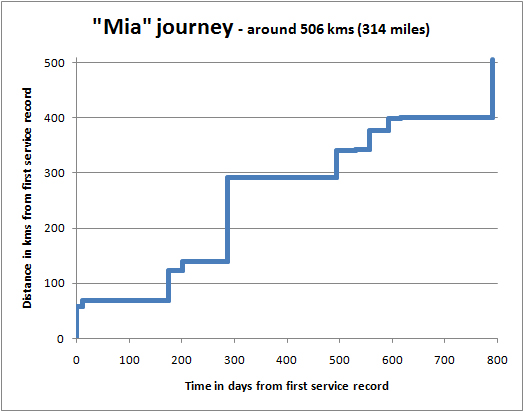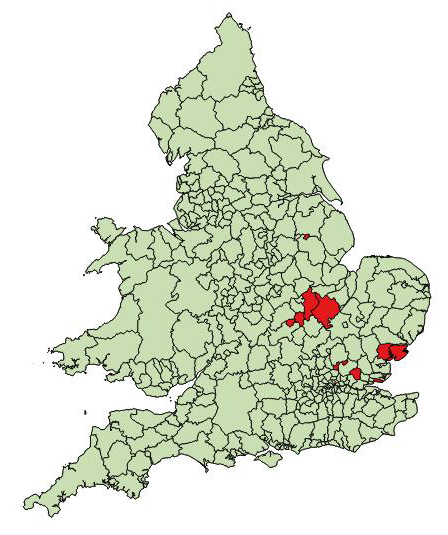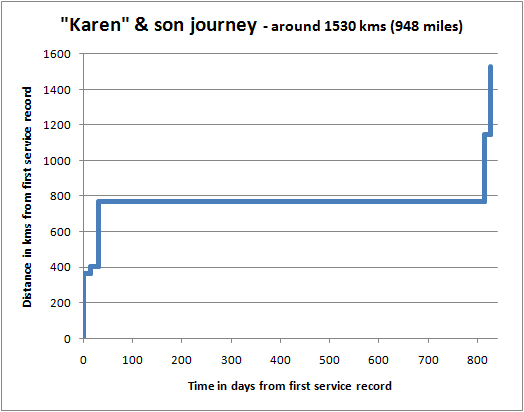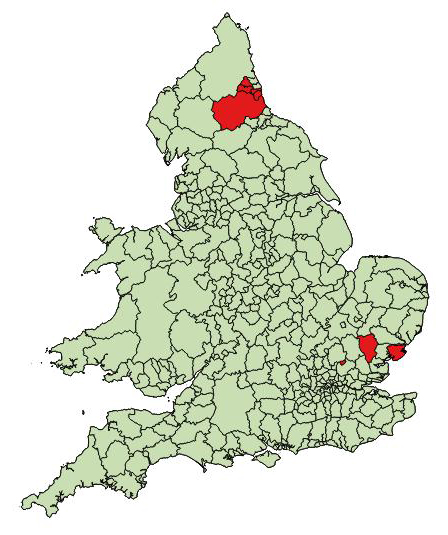Services in a particular area of the country often do not realise the extent of women’s journeys as they try to escape domestic violence.
Survivors themselves may have very good reason to keep their location – and relocation – secret as they try to escape an abuser who knows so much about them.
It is only by combining data from services across the country – and safely de-identifying them – that we can see the complexity of women’s journeys across months and years; and possibly hundreds of miles.
An example from one woman shows multiple moves[1]:

At the start of the record of accessing services due to domestic violence, “Mia” was 17. She was staying with friends in Essex, and over the next two and a half years travelled between four places in Essex, three in Northamptonshire, and one each in Hertfordshire and Cambridgeshire (all shown in red on the map), staying in refuges, Bed and Breakfast, private rented, hostel, supported housing and with friends. All the moves added up to over 300 miles (straight line distances). The final administrative record is a move to a women’s refuge in Lincolnshire – so still not to settled accommodation.

Another woman’s journey – with her son – shows fewer moves, but longer distances [1]:

At the start of the record of accessing services due to domestic violence, “Karen” was 45 with an 8 year old son. They were in a refuge in Gateshead, so already on the move due to domestic violence; and over the next two and a half years travelled between three places in Essex and two in the North East (all shown in red on the map), staying in refuges and with family. All the moves added up to around 950 miles (straight line distances). The final administrative record is a move out of a refuge in Essex to a local authority tenancy in Newcastle upon Tyne.

It all shows that the snapshot that any service sees – in a particular area of the country – is often only a small fragment of the complexity of any woman’s domestic violence journey.
[1] Analysis by Janet C. Bowstead using data from Department for Communities and Local Government and University of St Andrews, Centre for Housing Research (2012) Supporting People Client Records and Outcomes, 2003/04-2010/11: Special Licence Access [computer file]. Colchester, Essex, UK Data Archive [distributor]. Available from: http://dx.doi.org/10.5255/UKDA-SN-7020-1
